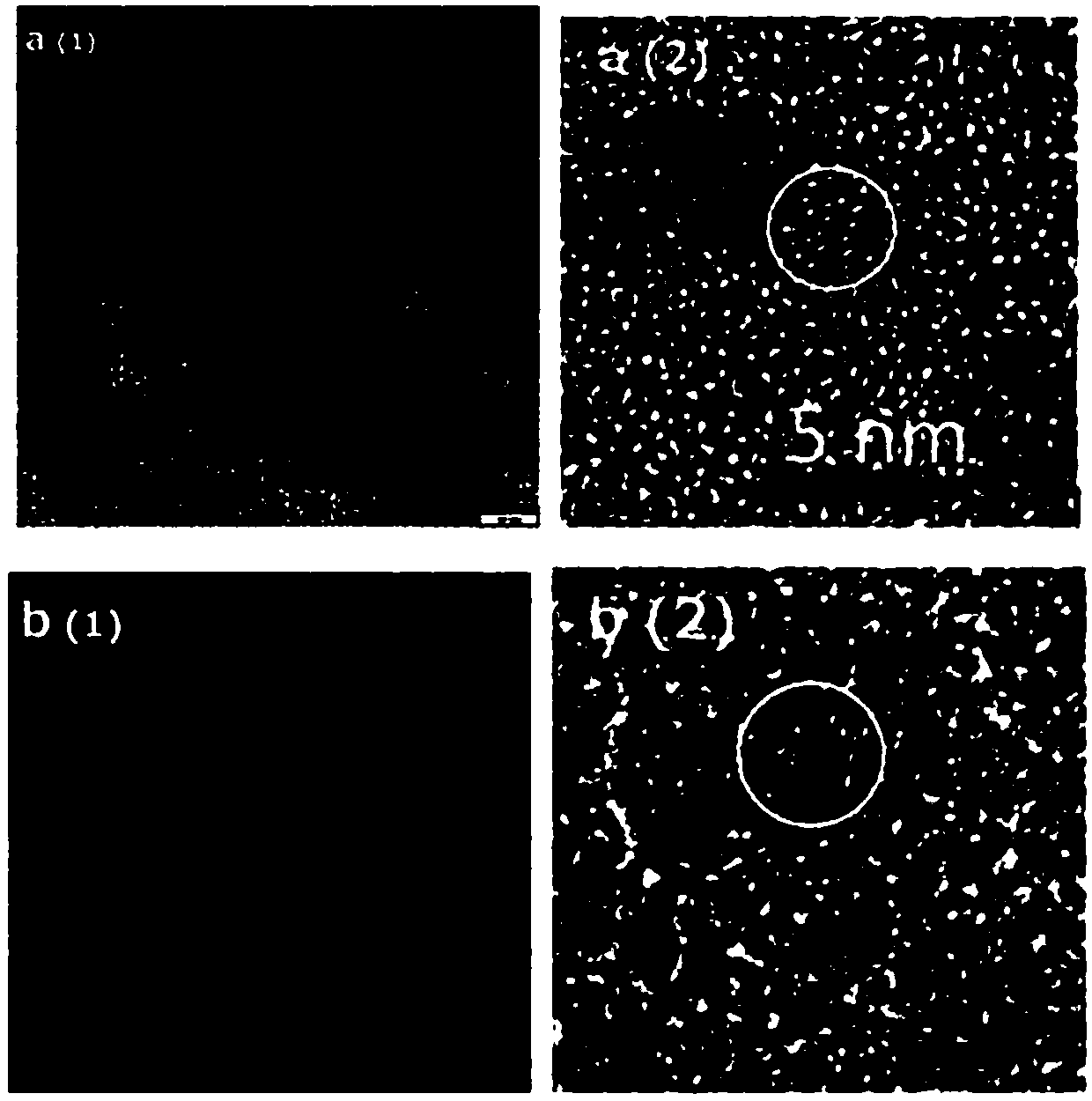High-fluorescent brightness quantum dot composite particle, immunological detection probe and preparation method of high-fluorescent brightness quantum dot composite particle
A technology of fluorescent brightness and composite particles, applied in the field of immunological detection probes, can solve the problems of quantum dot chemistry, physical instability, wide emission spectrum, and easy photobleaching
- Summary
- Abstract
- Description
- Claims
- Application Information
AI Technical Summary
Problems solved by technology
Method used
Image
Examples
Embodiment 1
[0034] 1.1 The CdTe quantum dots were synthesized by the aqueous phase method. First synthesize the NaHTe required for the preparation of CdTe quantum dots: combine Te powder with NaBH 4 Mix according to the molar ratio of 1:5, add a certain amount of water, heat and stir in a 60°C water bath under the protection of nitrogen until the solution turns lavender. 0.4 mmol of CdCl 2 2.5H 2 O was dissolved in 25 mL of water, 0.6 mmol of thioglycolic acid (TGA) was added, stirred, and then 1M NaOH solution was added until the pH value of the solution was adjusted to 11.2. The solution was deoxygenated with nitrogen for 30 minutes, then injected into the NaHTe solution prepared above, and heated to reflux at 100 °C for 0.5 h to obtain water-soluble CdTe quantum dots (particle size: 2.6 nm) emitting green light. The quantum dots are precipitated from the solution by ethanol and isopropanol, centrifuged, and the obtained quantum dots are dispersed in water.
[0035] 1.2 Take 1 mL of...
Embodiment 2
[0040] 2.1 The CdTe quantum dots were synthesized by the aqueous phase method. First synthesize the NaHTe required for the preparation of CdTe quantum dots: combine Te powder with NaBH 4 Mix according to the molar ratio of 1:5, add a certain amount of water, heat and stir in a 60°C water bath under the protection of nitrogen until the solution turns lavender. 0.4 mmol of CdCl 2 2.5H 2 O was dissolved in 25 mL of water, 0.6 mmol of thioglycolic acid (TGA) was added, stirred, and then 1M NaOH solution was added until the pH value of the solution was adjusted to 11.2. The solution was deoxygenated with nitrogen for 30 minutes, then injected into the NaHTe solution prepared above, and heated to reflux at 100 °C for 24 h to obtain water-soluble red-emitting CdTe quantum dots (particle size 4 nm). The quantum dots are precipitated from the solution by ethanol and isopropanol, centrifuged, and the obtained quantum dots are dispersed in water.
[0041] 2.2 Take 1mL of quantum dots...
Embodiment 3
[0046] 3.1 The CdTe quantum dots were synthesized by the aqueous phase method. The preparation method is as described in 2.1 of Example 2 above.
[0047] 3.2 Take 1.5mL of quantum dots, the concentration of quantum dots is 1.2 × 10 -6 M, add 0.5 μL of mercaptopropyltrimethoxysilane, and stir for 5 hours.
[0048] 3.3 Mix 2 mL of the alkoxysilanized quantum dot colloid solution described in preparation step 3.2 with 8 mL of propanol, add 0.8 mL of 5 wt % ammonia water, and stir for 15 hours to complete the self-assembly of quantum dots.
[0049] 3.4 Add 16 μL of propyl orthosilicate and 0.2 mL of 10wt% ammonia water to the solution of the self-assembled quantum dots described in the preparation step 3.3, then stir for 3 hours, add 1 μL of mercaptopropyltrimethoxysilane and continue stirring for 10 hours. SiO with evenly distributed quantum dots in the center and mercapto groups on the surface was obtained after centrifugation 2Particles, electron microscope photos as figu...
PUM
| Property | Measurement | Unit |
|---|---|---|
| diameter | aaaaa | aaaaa |
| particle diameter | aaaaa | aaaaa |
| particle size | aaaaa | aaaaa |
Abstract
Description
Claims
Application Information
 Login to View More
Login to View More - R&D
- Intellectual Property
- Life Sciences
- Materials
- Tech Scout
- Unparalleled Data Quality
- Higher Quality Content
- 60% Fewer Hallucinations
Browse by: Latest US Patents, China's latest patents, Technical Efficacy Thesaurus, Application Domain, Technology Topic, Popular Technical Reports.
© 2025 PatSnap. All rights reserved.Legal|Privacy policy|Modern Slavery Act Transparency Statement|Sitemap|About US| Contact US: help@patsnap.com



